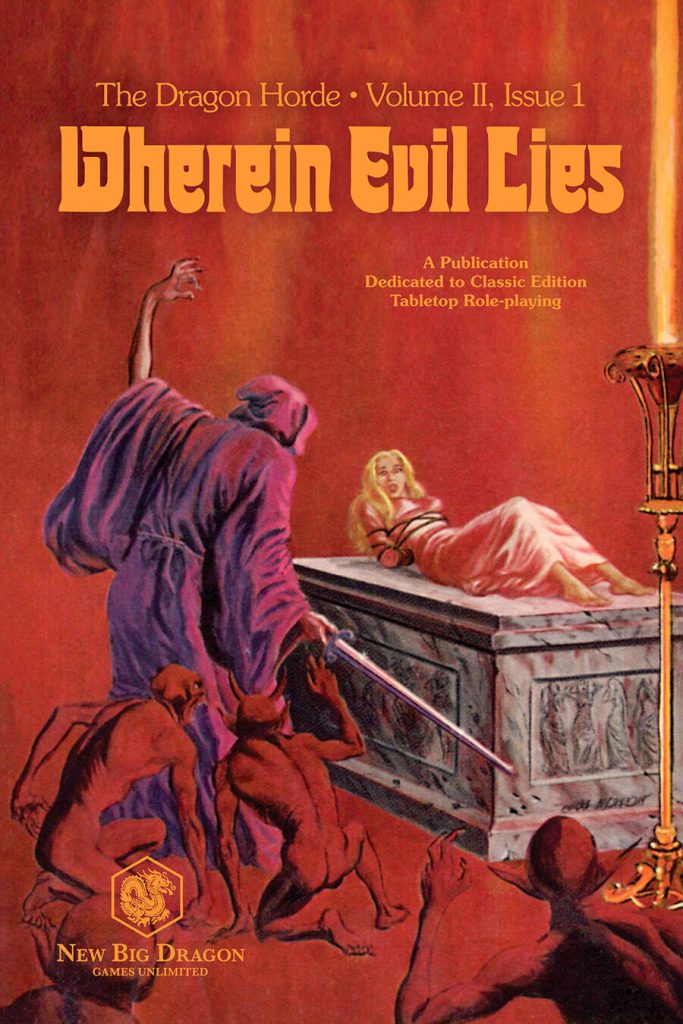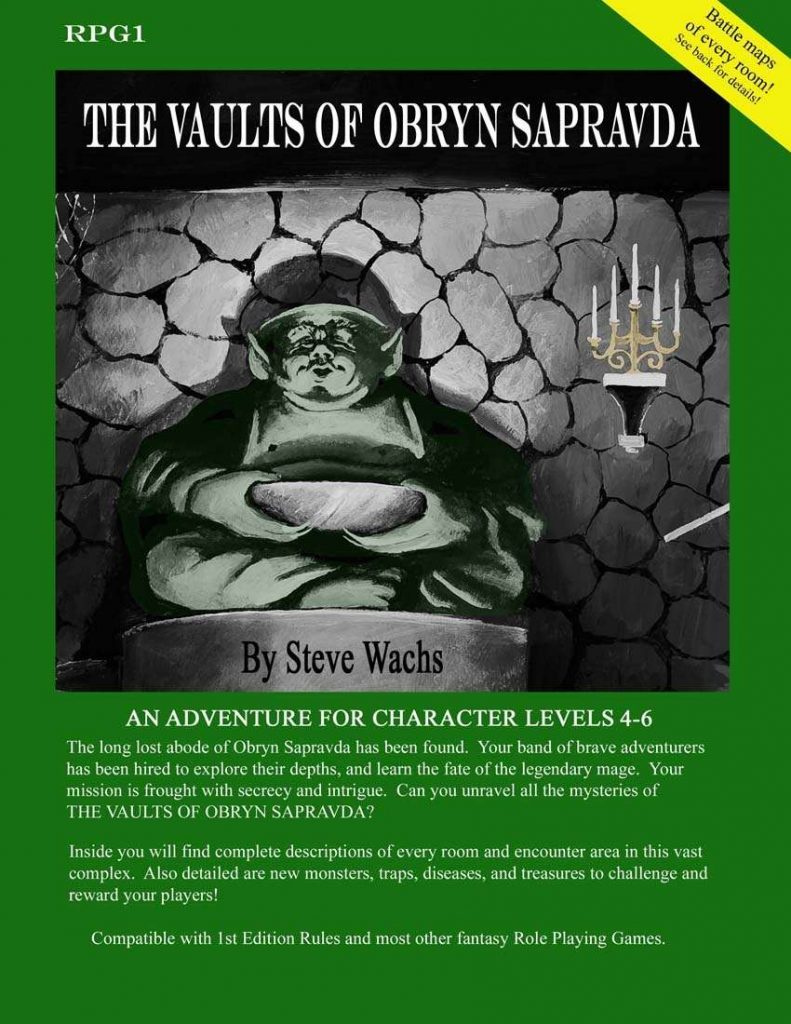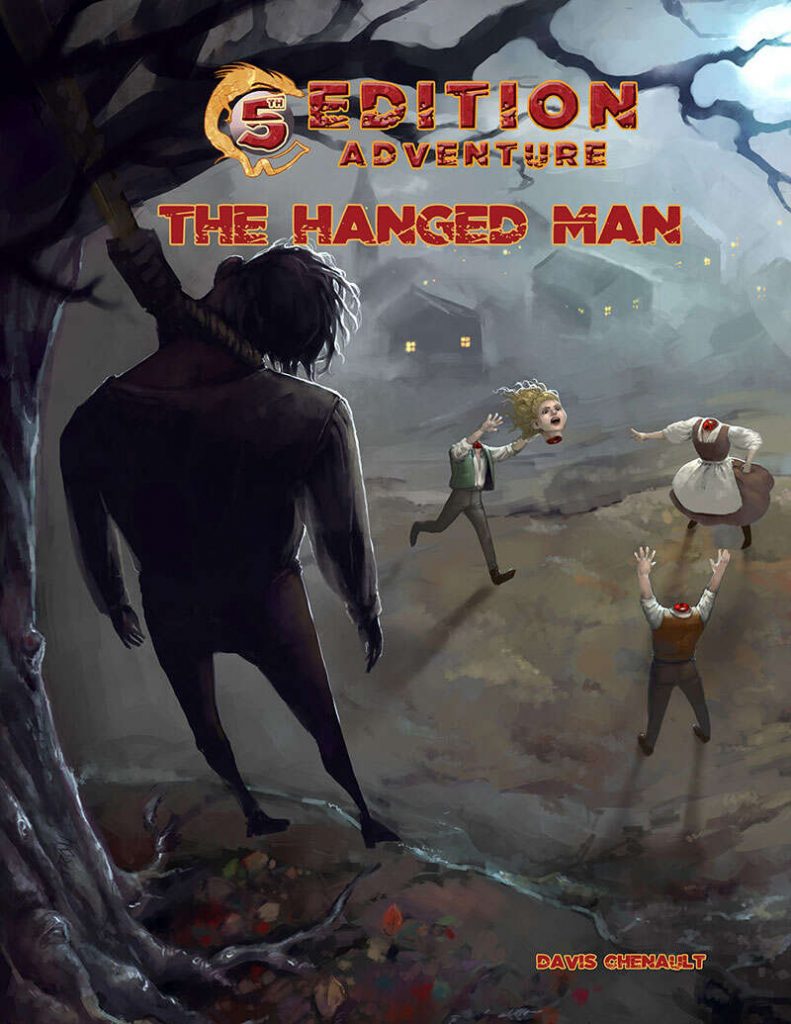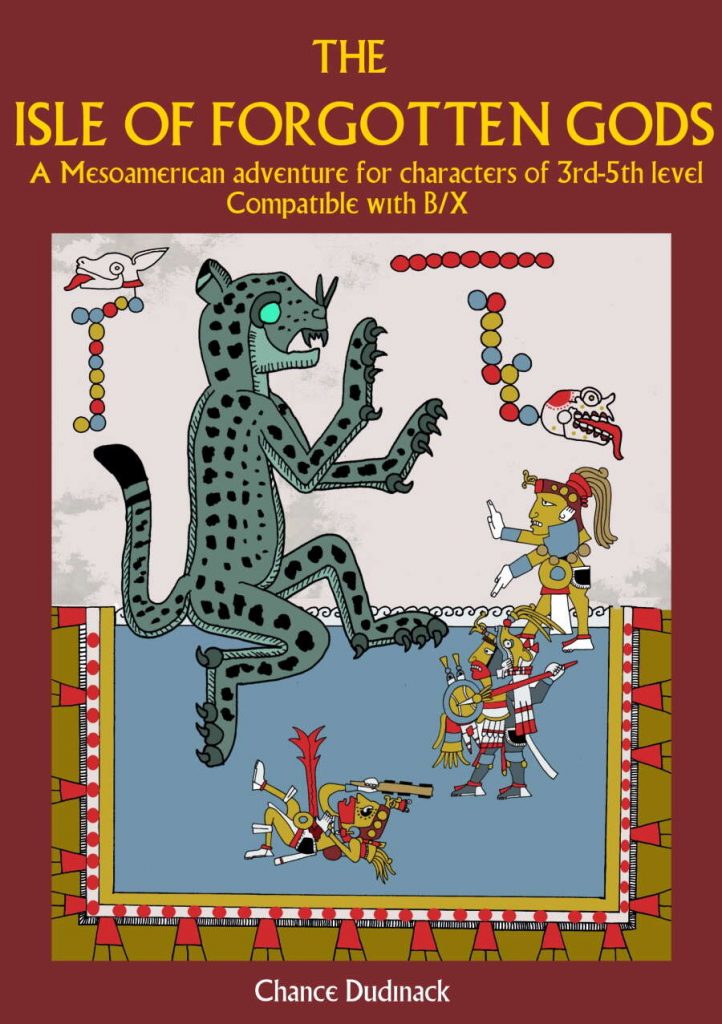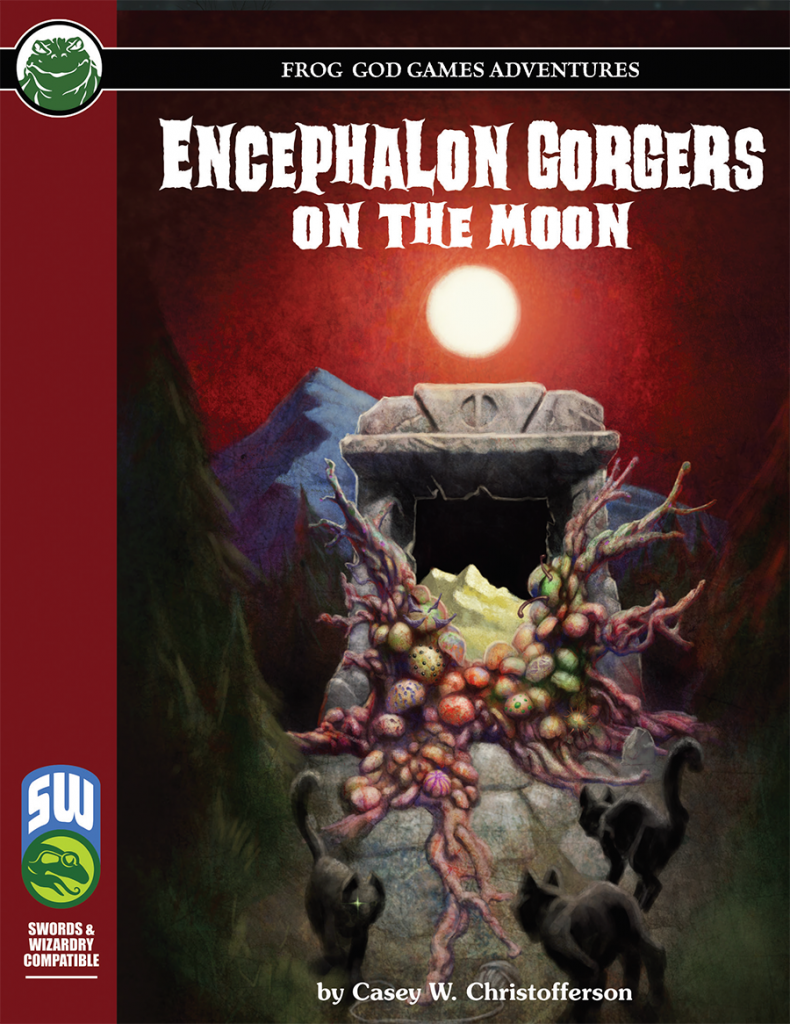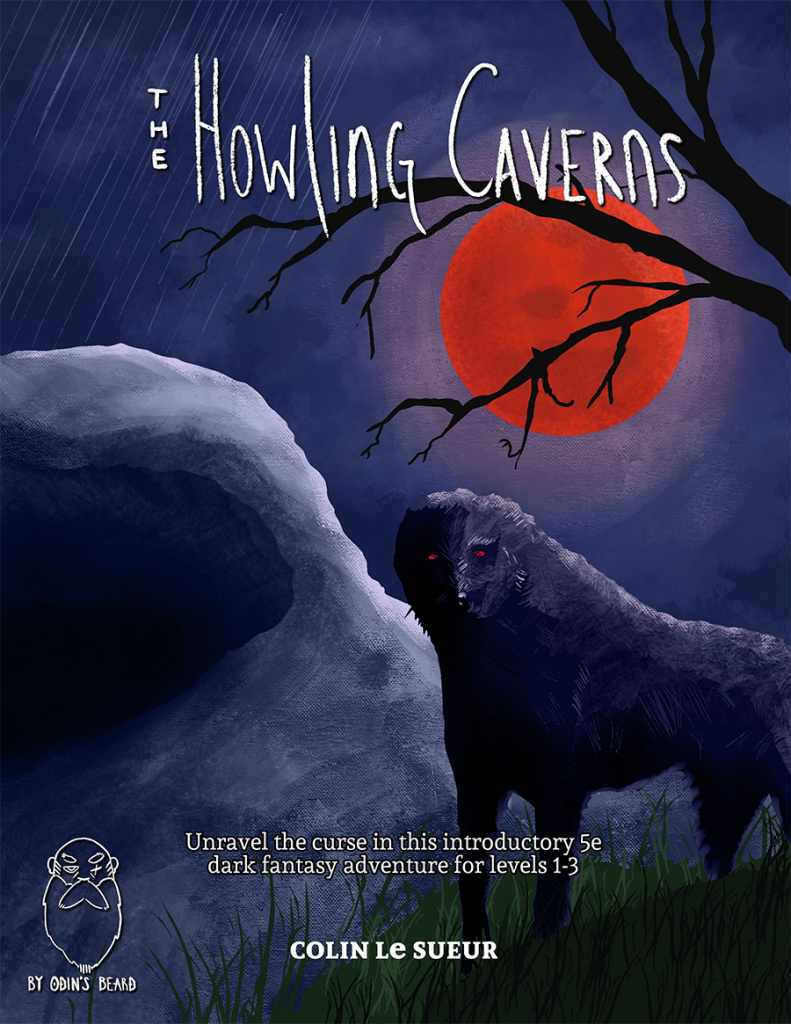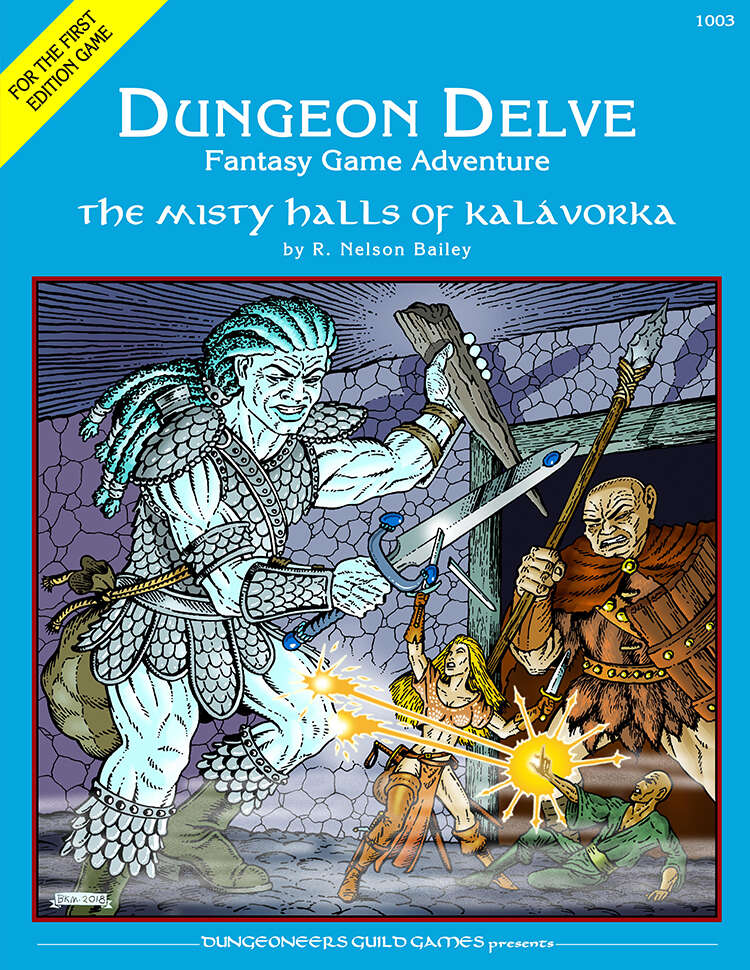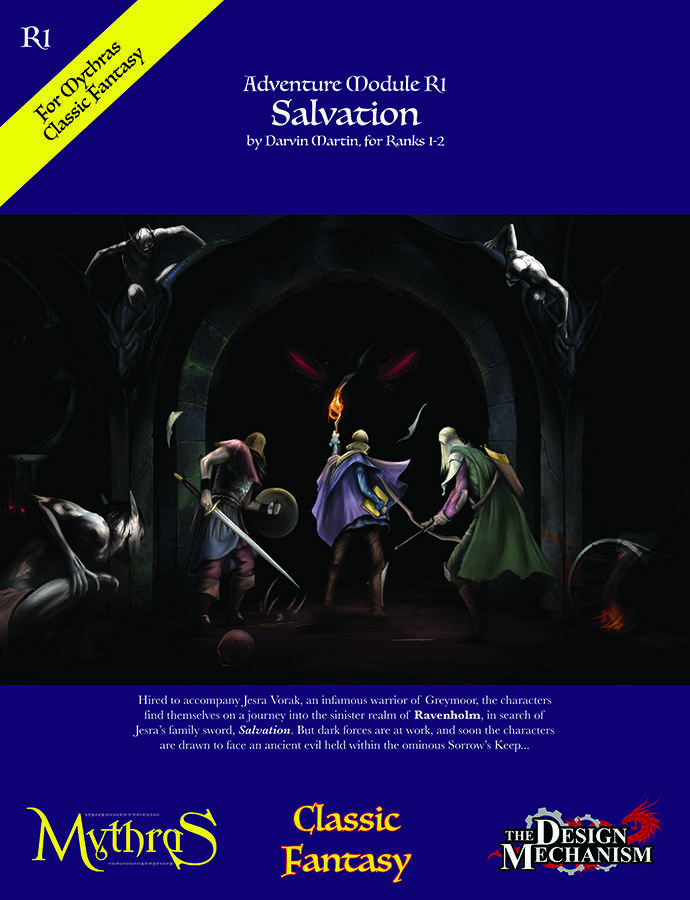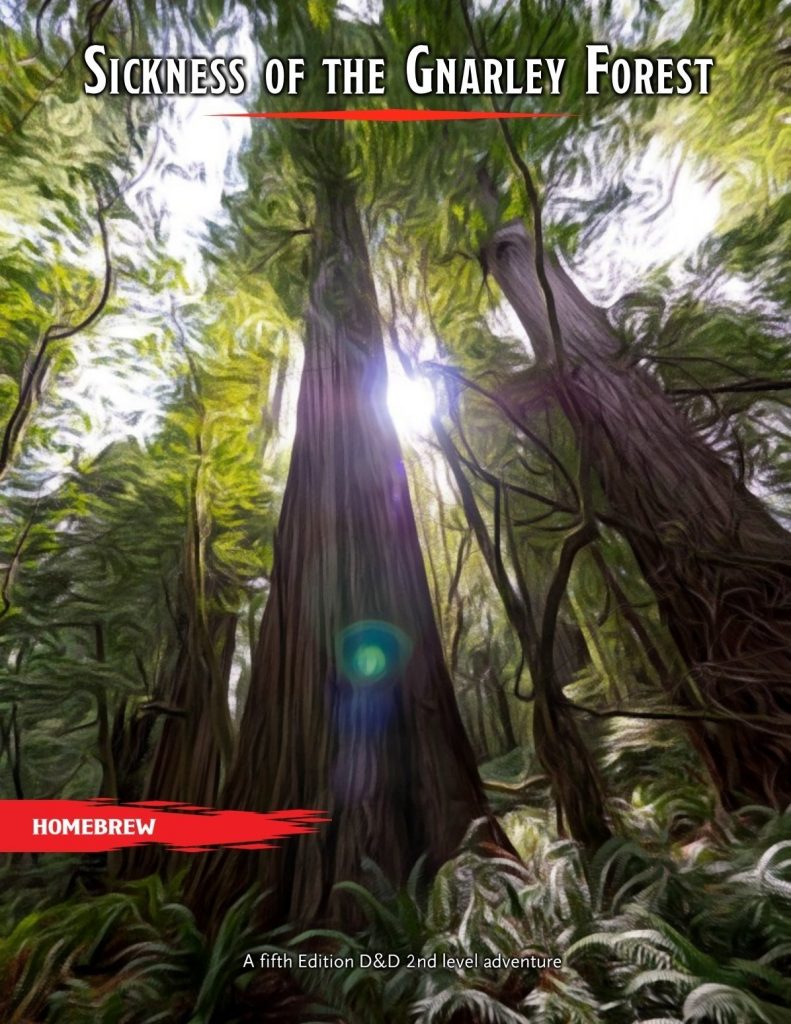
Patrick/Frogama Frogsama’s Greyhawk Adventures Blog 5e Level 2
A new lumberyard was established in the Gnarley Forest, but the morale of the workers is low because of recent attacks by orcish raider. The party is hired to protect the workers and kill the attacking orcs
This 45 page adventure details a few encounters as the party attempts to protect a lumberjack camp from raiding orcs. The first in an adventure path leveraging Greyawk, it drops in Melf, G1, and other references to a living Greyhawk world. It is cumbersome at times, with misses in organization and reference material, but the basic set up and delivery, the concepts behind the adventure, are pretty nice.
The party overhear a conversation in a bar with a lumberjack telling a merchant that he better fix the problem. This leads the party to the lumberjack camp that is eventually attacked by orcs. Questioning, or tracking them back to their camp reveals most are afflicted by a plague and the party finds a village of zombies being used by a disease-cult for training.
The designer, on their blog, states that they think that 5e is the best for story driven games and, I think, they might be right. At least close enough that argument is just splitting hairs. It is no surprise then that this adventure is chapter one in a campaign arc and is story driven. What’s interesting to me is how there has been a more than passing attempt to write a story based adventure that is not a railroad. There IS a kind of natural progression to things that flows from it, but there are also alternatives and advice for the DM for parties taking different paths, in most cases. This sets it apart from most of these sorts of adventures, in a good way. Things do get harder, I think, once the party is deeper in to the adventure, in later chapters. If this more open-ended approach can be kept then the designer will have solved that age-old “story without railroad in an AP” quandary. Future entries will tell.
The adventure relies on challenges and encounters that are not combat, or, at least, a mix of them. I can think of two combat encounters, both more … open-ended things, and several more that are not. That’s a decent variety and I, as always, appreciate both the more opended-ended nature of the combat encounters and in having non-combat ones as well. What you get are maybe three types, in total.
First, the combats, which tend to be on a larger open-ended village/compound style map. The first is the party reacting to an orc raid while the second is an assault on a village by the party. The second, in particular, is the kind of encounter that I love: a wacky plan. It being an open-ended assault, launched by the party, there is an opportunity for the party to come up with a plan on what to do. Which will, in my experience, inevitably be dumb and not go off well and lead to WONDERFUL things happenning during the game. This sort of player-driven activity is at the heart of good D&D.
Second, there are some potential combat situations that are telegraphed as “you’d be dumb to do that.” In one case the party sees a field of zombies that they need to get through, ala a walking dead mega-hoard. This is set up very similar to a 4e skill challenge … maybe a little too mechanistic for my tastes (which was always the problem with most 4e skill challenges) but the variety here, and intensity, of getting past the hoard should indeed be a memorable experience, I’ll give the designer that. Another encounter, with a camp full of orcs with stomach viruses, come off in a similar way except without the skill checks. It’s pretty obvious that the party is out of their league and that telegraphing leads to solutions other than combat.
Finally, the third sort of encounter, again with a couple of them present, is more window-dressing. These are NPC encounters on the road, or a brief stop by a castle being built on the way to the camp, or the initial lumberjack camp interaction. The party is essentially just meeting people and experiencing the world around them. This last category goes in to the worldbuilding category, as it tries to bring some holistic world to the party, give them a feel that things are going on around them, and introduces some history, like refugees from the G series adventures. I can absolutely see where this is going and we’ll have to see if full advantage is taken of this in other entries to follow-up on things like the castle being built, etc.
It’s going a couple of other interesting things as well. One of the few skill checks (outside of the skill challenge anyway) is a medicine roll while looking at a plague victim. It’s got a low initial value and there are various levels of success that reveal some interesting things about the plague that add to the story, up to and including “its clearly man made.” The skill check for the zombie hoard also has an interesting fail condition: an orc scout gets eaten. He led you there, showed you, most likely, and tying the characters fuck up rolls to a negative for the party, and taking care of an NPC while at it, IS in fact, and interesting story development. It’ has a slight mechanistic component, you no longer have an ally, and a strong story component; nicely done. It’s also got decent DM advice in places, like “well, the dudes you are talking with should know the answer, I’ll look it up and get back to later with it.” … specifically acknowledging that there’s no shame in this. And he’s right.
And there are some substantial misses here as well.
The maps are ALMOST great. Note that two of the combat encounters are, essentially, wide open village-y battles, with a third being an orc camp with a social element. The maps for all three locations fit an interesting scale. They are not battle maps, and they are not “countryside” maps. They tend to show the village and just a hint of trees/features beyond them. The scale of these maps is just a bit claustrophobic for me, for this type of encounter. The maps do show things like huts, hay bales, etc, to hide behind and so forth. That’s great, it’s what they should show, larger features, for these sorts of Wacky Plan sorts of encounters. I wish though that it showed just a little bit more beyond the village edge proper. The ability to come in, find a rise or hill, or some larger trees nearby, etc, would have helped with the lead in. It does do this, to a certain extent, but it needs just a little more to be truly effective.
There are some occasional text inconsistencies, like in the number of elves present in a certain encounter: three or four? This is related to the need for a decent edit. These editing issues present themselves in several areas. There are simple misspellings, as well as awkward phrasings here and there throughout the text. More importantly, certain elements are “missed.” For example, some names, generally bolded in the text, are not, making it harder to find them. In other areas the names of important NPC”s are missing altogether, or, if included, are in the appendix in the monster stats sections rather than in the text you’re running from.
Other text is … disorganized? Sometimes it appears that text appears out of order. A message arrives for the party while they are at a camp … but this section is AFTER they have moved on from the camp. In other areas important information is depeper in the text then it should be. The zombie encounter spends a lot of time talking about zombies and the environment, in general, before getting to there being dozens of zombies present. There’s a generally expected arrangement of facts that one would expect and the organization of parts of the adventure doesn’t seem to follow that. So while it MAY be present, it’s not where you expect it to be.
But, whatever, that’s a practice thing, mostly. You write, you learn, you think about it, you go back and eit again with fresh eyes. As a plot based adventure that’s more open-ended than most, it’s decent. But more bullets,etc and less paragraphs for relaying important information!
This is free on the designers blog:

